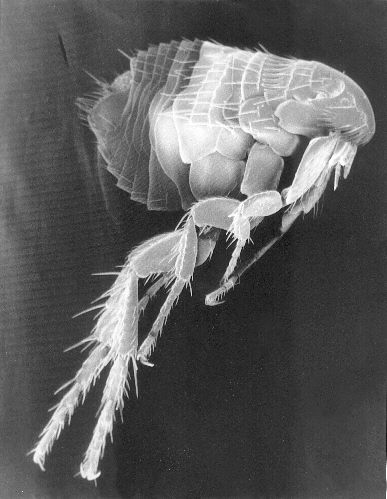m (W126jep moved page Adventist Youth Honors Answer Book/Insect/Siphonaptera to AY Honors/Insect/Siphonaptera without leaving a redirect: Part of translatable page "Adventist Youth Honors Answer Book/Insect/Siphonaptera") |
|||
| (2 intermediate revisions by the same user not shown) | |||
| Line 25: | Line 25: | ||
<!--T:7--> | <!--T:7--> | ||
}} | }} | ||
| − | |||
| − | |||
| − | |||
| − | |||
| − | |||
| − | |||
| − | |||
<noinclude></translate></noinclude> | <noinclude></translate></noinclude> | ||
Latest revision as of 12:28, 27 July 2022
Flea (Siphonaptera)
Order: Siphonaptera
Description: Fleas are external parasites, living off the blood of mammals and birds. Fleas are small (1/16 to 1/8-inch (1.5 to 3.3 mm) long), agile, usually dark colored (for example, the reddish-brown of the cat flea), wingless insects with tube-like mouthparts adapted to feeding on the blood of their hosts. Their bodies are flattened side to side, permitting easy movement through the hairs or feathers on the host's body. Their legs are long, the hind pair well adapted for jumping (vertically up to seven inches (18 cm); horizontally thirteen inches (33 cm) - around 200 times their own body length, making the flea the best jumper out of all animals (in comparison to body size). The flea body is hard, polished, and covered with many hairs and short spines directed backward, allowing the flea a smooth passage through the hairs of its host. Fleas attack a wide variety of warm-blooded vertebrates including dogs, cats, humans, chickens, rabbits, squirrels, rats and mice. Fleas are a nuisance to their hosts, causing an itching sensation which in turn may result in the host attempting to remove the pest by biting, pecking, scratching etc the vicinity of the parasite. Fleas are not simply a source of annoyance, however. Some people and animals suffer allergic reactions to flea saliva resulting in rashes. Flea bites generally result in the formation of a slightly-raised swollen itching spot with a single puncture point at the center. The bites often appear in clusters or lines, and can remain itchy and inflamed for up to several weeks afterwards. Fleas can also lead to hair loss as a result of frequent scratching and biting by the animal, and can cause anemia in extreme cases. Besides the problems posed by the creature itself, fleas can also act as a vector for disease. For example, fleas transmitted the bubonic plague between rodents and humans by carrying Yersinia pestis bacteria.

